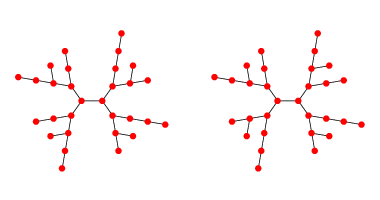In passing it needs to be remarked that the epistemological problems presented by a lack of linguistic support for calculating, r, coefficients of relationship, amount to a serious defect in the theory of kin selection. Fractions are of very rare occurrence in the world’s languages, appearing in Indo-European and in the archaic civilizations of the Near and Far East, but they are generally lacking among the so-called primitive peoples. Hunters and gatherers generally do not have counting systems beyond one, two and three. I refrain from comment on the even greater problem of how animals are supposed to figure out how that r [ego, first cousins] = 1/8. The failure of sociobiologists to address this problem introduces a considerable mysticism in their theory.
- Sahlins (1977) The Use and Abuse of Biology: An Anthropological Critique of Sociobiology.
Please give me an example where kin selection has been conclusively demonstrated in any species other than animals. I'm not interested in theoretical speculations or models. I'm interested in actual evidence.
- Moran, Larry (2012) Squirrels, Dawkins, and Evolution
Er, kin selection is not confined to animals. See, for example:
- Gilbert, O. M., Strassmann, J.E., & Queller, D.C. (2012) High relatedness in a social amoebae: the role of kin discrimination.
- Kuzdzal-Fick, J.A., Fox, S.A., Strassmann, J.E. & Queller, D. C. (2011) High relatedness is necessary and sufficient to maintain multicellularity in Dictyostelium.
- Gilbert, O.M., Foster, K.R., Mehdiabadi, N.J., Strassmann, J.E., Queller, D.C.(2007) High relatedness maintains multicellular cooperation in a social amoeba by controlling cheater mutants.
- Donohue, K. (2003) The influence of neighbor relatedness on multilevel selection in the Great Lakes sea rocket.
- Kelly, J.K. (1996) Kin selection in the annual plant Impatiens capensis.
- Dudley, Susan A. and File, Amanda L. (2007) Kin recognition in an annual plant.
- Rumbaugh K.P., Trivedi U., Watters C., Burton-Chellew M.N., Diggle S.P., West S.A. (2012) Kin selection, quorum sensing and virulence in pathogenic bacteria.
- Strassmann, J.E., Gilbert, O.M., Queller, D.C. (2011) Kin discrimination and cooperation in microbes.
- Chao, L., Hanley, K.A., Burch, C.L., Dahlberg, C. and Turner, P.E. (2011) Kin selection and parasite evolution: higher and lower virulence with hard and soft selection.
 Both
Both  These days, there's a scientific consensus about group selection and kin selection.
These days, there's a scientific consensus about group selection and kin selection. It was observed early on that most of the evidence that was cited as favouring group selection seemed to be explained rather well by kin selection.
It was observed early on that most of the evidence that was cited as favouring group selection seemed to be explained rather well by kin selection. Group selection enthusiasts were dissatisfied with the consensus that group selection couldn't compete with individual-level selection. They counter-attacked in a number of ways, saying that:
Group selection enthusiasts were dissatisfied with the consensus that group selection couldn't compete with individual-level selection. They counter-attacked in a number of ways, saying that: Price's insight about the generality of selection made slow progress into the mainstream.
Price's insight about the generality of selection made slow progress into the mainstream.  One of the more significant developments in the early history of kin selection was the contribution of George Price. Price had read Hamilton's papers, and contributed a mathematical model of kin selection that proved superior to Hamilton. Hamilton had worked with the concept of shared genes. Price developed a largely-equivalent formulation based on correlations. Price's maths was better than Hamilton's - and it raised the possibility of spiteful behaviour.
One of the more significant developments in the early history of kin selection was the contribution of George Price. Price had read Hamilton's papers, and contributed a mathematical model of kin selection that proved superior to Hamilton. Hamilton had worked with the concept of shared genes. Price developed a largely-equivalent formulation based on correlations. Price's maths was better than Hamilton's - and it raised the possibility of spiteful behaviour. The dust-up between kin selection and group selection began in 1964 with a paper by John Maynard Smith titled "
The dust-up between kin selection and group selection began in 1964 with a paper by John Maynard Smith titled "
 The term "
The term "